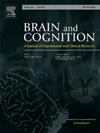Training method and difficulty modulate electrophysiological correlates of visual perceptual learning
IF 1.4
3区 心理学
Q3 NEUROSCIENCES
引用次数: 0
Abstract
The present study focused on the influence of training methods and task difficulty on event-related potentials (ERPs) at early and later visual perceptual learning (VPL) on a coherent motion identification task. Sixty participants were randomly divided into four groups for training with an adaptive stimulus (staircase group) and three constant stimuli (moderate, easy and difficult intensity groups). Visual performance improved in the staircase and moderate training groups but not in the easy or difficult training groups. ERP results revealed a decreased P1 amplitude in all groups. Additionally, staircase training increased the frontal P2 amplitude; accordingly, moderate constant stimulus training reduced the frontal P2 amplitude and increased the frontal N2 amplitude. Importantly, the change in frontal P2 amplitude was correlated with improved performance, indicating the involvement of cortices responsible for higher-order cognitive processes in VPL. Additionally, the difference in frontal P2 amplitude changes suggests the modulation of training methods (adaptive and consistent) on the role of attention in VPL. Furthermore, although behavior changes were not observed, the brains in the easy and difficult groups still presented different ERP changes. In summary, the results provide electrophysiological evidence for the modulation of training methods and task difficulty in VPL-related neuroplasticity.
训练方法和难度调节视觉知觉学习的电生理相关。
本研究主要研究了训练方法和任务难度对连贯动作识别任务中视觉知觉学习(VPL)早期和后期事件相关电位的影响。60名参与者随机分为四组,分别采用适应性刺激(阶梯组)和三组恒定刺激(中、易、难强度组)进行训练。楼梯训练组和中等训练组的视觉表现有所改善,而简单训练组和困难训练组的视觉表现均无改善。ERP结果显示各组P1振幅均下降。此外,楼梯训练增加了额部P2振幅;相应的,适度恒定刺激训练降低了额叶P2振幅,增加了额叶N2振幅。重要的是,额叶P2振幅的变化与表现的提高相关,表明负责VPL高阶认知过程的皮层参与其中。此外,额叶P2振幅变化的差异提示了训练方法(适应性和一致性)对注意在VPL中的作用的调节。此外,虽然没有观察到行为的改变,但易、难组的大脑仍然呈现出不同的ERP变化。综上所述,研究结果为训练方法和任务难度对vpl相关神经可塑性的调节提供了电生理学证据。
本文章由计算机程序翻译,如有差异,请以英文原文为准。
求助全文
约1分钟内获得全文
求助全文
来源期刊

Brain and Cognition
医学-神经科学
CiteScore
4.60
自引率
0.00%
发文量
46
审稿时长
6 months
期刊介绍:
Brain and Cognition is a forum for the integration of the neurosciences and cognitive sciences. B&C publishes peer-reviewed research articles, theoretical papers, case histories that address important theoretical issues, and historical articles into the interaction between cognitive function and brain processes. The focus is on rigorous studies of an empirical or theoretical nature and which make an original contribution to our knowledge about the involvement of the nervous system in cognition. Coverage includes, but is not limited to memory, learning, emotion, perception, movement, music or praxis in relationship to brain structure or function. Published articles will typically address issues relating some aspect of cognitive function to its neurological substrates with clear theoretical import, formulating new hypotheses or refuting previously established hypotheses. Clinical papers are welcome if they raise issues of theoretical importance or concern and shed light on the interaction between brain function and cognitive function. We welcome review articles that clearly contribute a new perspective or integration, beyond summarizing the literature in the field; authors of review articles should make explicit where the contribution lies. We also welcome proposals for special issues on aspects of the relation between cognition and the structure and function of the nervous system. Such proposals can be made directly to the Editor-in-Chief from individuals interested in being guest editors for such collections.
 求助内容:
求助内容: 应助结果提醒方式:
应助结果提醒方式:


